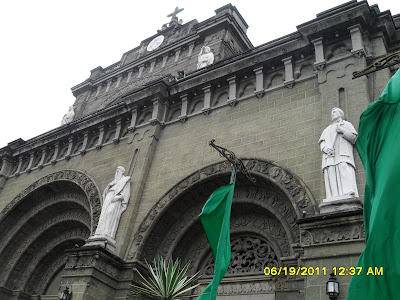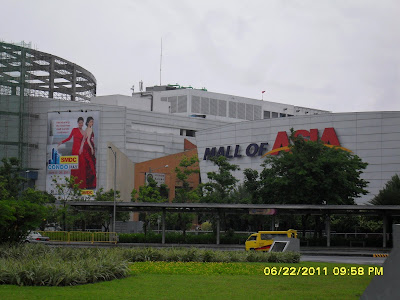During my stay in the Philippines, I have seen both Spanish and American influences that continue to exist today. The Philippines was colonized by the Spaniards in 1521 and were under the United States’ tutelage by 1898. During both periods, the Filipinos were suppressed under their rule. Both the Spaniards and the Americans had their own intentions of colonizing the Philippines. They wanted to take advantage of foreign trade, land ownership, natural resources, and sovereignty. Suarez mentioned, “Globalization is the ongoing process of intensifying economic, social and cultural exchanges across the planet.” The Spaniards and the Americans used the Philippine people and islands to benefit themselves in the future. A graduate student from the University of the Philippines had informed me that the Spaniards wanted to enforce Christianity onto the Filipinos to save their souls. Spaniards focused on a religion push whereas the Americans focused on economics.
In Zinn and Iletto’s article, Americans believed that the Filipinos were uncivilized. In aCartoon History of the United States by Zinn, President McKinley announces, “There was nothing left for us to do but to take all the islands and educate the Filipinos. We have to civilize and Christianize the Filipinos!” What does “uncivilized” really mean? According to Professer Jose from the University of the Philippines, “uncivilized” meant being at the lowest level of evolution of man (Darwin theory). This meant the Americans did not view Filipinos as human beings, instead as animals. There were many cartoon illustrations of Filipinos in the image of monkeys and were portrayed as being barbaric and dark in skin color. Because of their racist views of the Filipinos, the Americans felt the need to bring enlightenment to the Philippines. I believe the Filipinos were civilized before the Philippines were colonized by Spain. The Filipinos had created their own ancient script called “baybayin” and "alibata". Eighty-percent of the Filipinos were literate before Spain came and they had their own form of government and foreign trade with other Southeast Asian countries. The Filipinos were civilized and did not need to be exposed to the Spanish and American influences. The 2000 year old rice terraces in Banaue were carved into the mountains without European technology. They had knowledge of water irrigation, farm work, and stone work to create rice terraces that are known to be the eighth wonder of the world and a national cultural treasure. Hiking the rice terraces was an eye-opening experience and I was amazed to see how the handmade irrigation system was put together.
(Water flows through the bamboo)
From my experiences of being in the Philippines, I have noticed that the spread of Christianity continues to influence the customs and traditions of the Philippines today. Both my parents raised me as a Catholic but I never knew when or how Christianity was introduced in the Philippines. Christianity was introduced by Ferdinand Magellan during the Spanish colonial era and many Spanish friars began converting Filipinos and instructed them in school. Spanish was dominantly used in schools, churches, and government institutions. According to a graduate student at the University of the Philippines, Catholicism was introduced to the Filipinos in the 1570s. During the American occupation, American priests, Protestant denominations and other independent churches were established.
Similar to having a number of Starbucks in every district or city in Washington, there are a handful of Christian churches in every barangay in the Philippines. When I visited my uncle’s college, San Sebastian College in Cavite City, I noticed that the Spanish missionaries during the colonial period established schools and combined them with churches.
(San Sebastian College – Cavite City)
(Church inside the college)
(Jesus Christ)
(Blessed Virgin Mary and baby Jesus)
I was also able to see several cathedrals in different parts of Manila that were built during the Spaniard colonization. The Manila Cathedral was built in 1851. The Spanish friars have made a large contribution to the architectural designs during the Spanish period. I have also seen several Christian churches called Iglesias ni Christo that was established independently during the United States occupation.
(another Cathedral)
(Iglesia ni Christo “Church of Christ”)
During the car ride to Batad I was able to see homes designed in the Spanish colonial period and saw Victorian houses designed by American architects in Baguio City.
(Spanish colonial era)
Being in the Philippines for about two and a half weeks, I have seen other Catholics show their sign of faith everywhere. The Spanish influence of Catholicism is deeply ingrained in their minds and it has been passed down generation after generation. During my ride on the MRT today, I noticed a number of Catholics making a sign of the cross after the MRT passed by a large Virgin Mary statue that was larger than the University of the Philippines statue. I also saw people on the MRT wearing rosaries around their neck. A lot of the Jeepneys and tricycles have had words that say, “Jesus Christ” or “God” on the front and have images of the crucifix or Jesus on the sides of it. I have also seen stickers inside the vehicle and rosaries hanging on the rear-view mirror.
"Jesus king in this world""Smile God loves you"
(Rosaries hanging on the rear-view mirror)
During the United States occupation, the Americans modeled the schools in the Philippines on the system of education in the United States. Filipinos were forced to learn and speak the English language. When I went to my first Sunday mass in Bacoor, Cavite, I initially assumed I would only understand the words “Amen”, “Alleluia”, and “Christo”. Little did I know the priest could speak both English and Tagalog. The whole mass was said in English except during the homily, beginning and ending hymns. During the homily, the priest spoke in English and then translated what he said into Tagalog.
When I went to Holy Sacrifice Catholic church at the University of Philippines, I attended a Tagalog mass nstead of an English mass and I was surprised when the priest began to use both English and Tagalog words in the same sentences. Because it was a Tagalog mass, I expected every word to be said in Tagalog.
(this church is recognized as a national historical landmark and a cultural treasure by the National Historical Institute and the National Museum)
The Filipinos today know English and Tagalog or their local dialect. A graduate student from the University of Philippines had explained that English was the primary language used in the education system until the 1950s. After the 1950s, changes were made and both English and Tagalog or their local dialect could be used during class instruction. Nico and Maria from Commission on Filipinos Overseas explained that English is the dominant language used in schools today and that Tagalog or their local dialect is only used for Filipino cultural classes. Nico had explained that children today learn their national language through family members, neighbors, or taking language classes.
The impact that the Americans and Spaniards made on the Filipinos can be seen everywhere in the Philippines. There are advertisements or signs written both in English and Tagalog while others are solely in English. I have also heard Filipino DJs on the radio and TV hosts use both English and Tagalog in the same sentence. In the Filipino language, there are several Spanish loanwords that continue to be used today. There are also Spanish street or building names and surnames that Filipinos have.
(Ad in English)
(MRT station directions in English)
Restaurants like the University Hotel’s menu include an “American breakfast” and a chain of fast-food restaurants and shopping malls are similar to what we have in the United States.
(University Hotel menu includes "American Breakfast")
(SM Mall - Bacoor)
As a result of Spanish and American imperialism, many cultural and social influences continue to exist in the Philippines today. The spread of Christianity beginning in 1521 has led to the continuous existence of churches, cathedrals, and large Christian statues. The Spanish and American architectural designs of several buildings are also found in the Philippines. The influence of the Spanish language is used within Tagalog. The Filipinos’ way of thinking has been Americanized since 1898 under United States tutelage. Both English and Tagalog are used to communicate in school, church, government institutions, and everywhere else. English and Tagalog are found everywhere in the media. The rise of fast-food restaurants and shopping malls clearly show that parts of the Philippines are becoming to look like an American city. Even though it is written in history that the Philippines were not under United States’ policies after WWII, the constitution of the Philippine government and the education system is still similar to the United States today.
DISUCUSSION QUESTION:
In the future, do you believe the Philippine government will abolish the English language and the use of U.S. policies? What changes would you make in the Philippine education and government system
(University of the Philippines campus)
































Great Job! I liked how you included the readings, your conversations, other Filipinos, your daily observations of Filipino like and your personal experiences into the blog. How did the Spanish and US affect the establishment of Bagiuo? In terms of your own personal reflection, you said you think the Filipinos were civilized before the Spaniards came to the islands. What does civilized mean today? Has it changed from the past? Excellent use of photos.
ReplyDelete-Leah-
I appreciate your reflection, good observations, and pictures. You may want to change the establishment of Manila Cathedral to 1581 to 1851 so that other readers are informed of the actual date; information is very influential to constructing knowledge. It is also interesting to observe that Christianity is so ingrained in the Filipino psyche. In reference to your discussion question, due to hegemonic forces, ( assimilation without the use of physical force and where the oppressed consent to their oppression -gramsci-)it would be extremely difficult for the Philippines government to abolish English as a medium of communication. Even the name "Philippines" and the word "Filipino" is a product of colonization. There are discussions to whether change the name "Philippines" and "Filipinos" to something more indigenous/non- Eurocentric name. (ie. Burma change their name to Myanmar and Zaire to Congo)
-Third-